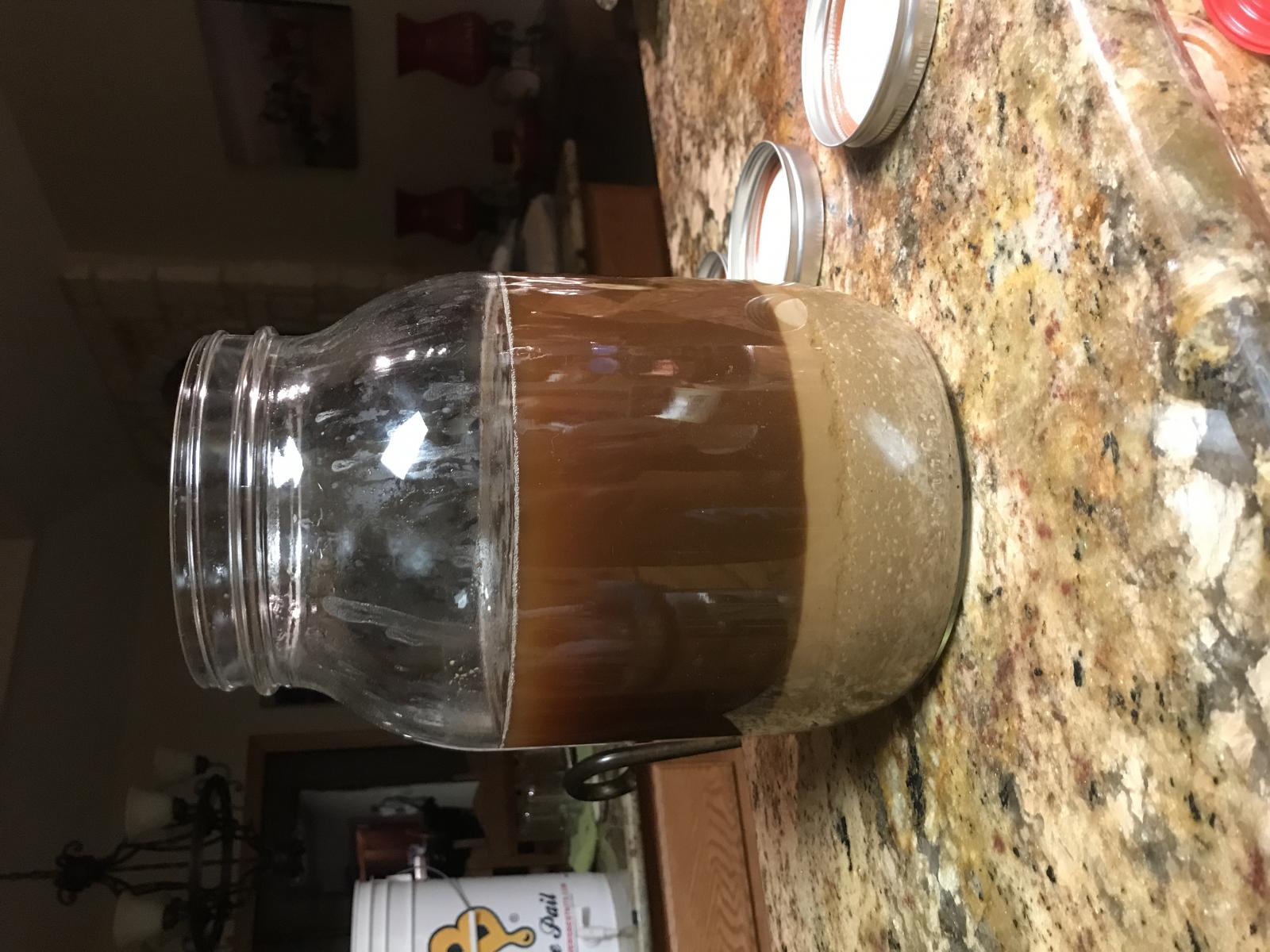I am attempting to harvest the yeast from my first brew, a Bavarian dopplebock. The yeast that I used was wyeast Munich lager 2308. I poured the yeast off the trub from the fermenter into a gallon jar. I ended up letting the jar sit overnight because something was confusing me. This is what I woke up to this morning.
I was confused because I expected the yeast to be creamy and white, and the whiter stuff was settling to the bottom. However, as you can see from the photo, the yeast is actually quite dark. Is this because my beer is so dark? How will this affect the flavor of any beer I use it on in the future? Finally, my beer is going to end up around 8.3% ABV. I read last night not to harvest yeast from a dark brew or a beer over 6% ABV because they will be too stressed. Anything to that? If I need to, I will throw the yeast out, but would like to hang onto it to save money on future brews if it is in fact good yeast. What say the experts?
Not sure why the picture is sideways, and I don't know how to fix it. Sorry.

I was confused because I expected the yeast to be creamy and white, and the whiter stuff was settling to the bottom. However, as you can see from the photo, the yeast is actually quite dark. Is this because my beer is so dark? How will this affect the flavor of any beer I use it on in the future? Finally, my beer is going to end up around 8.3% ABV. I read last night not to harvest yeast from a dark brew or a beer over 6% ABV because they will be too stressed. Anything to that? If I need to, I will throw the yeast out, but would like to hang onto it to save money on future brews if it is in fact good yeast. What say the experts?
Not sure why the picture is sideways, and I don't know how to fix it. Sorry.



